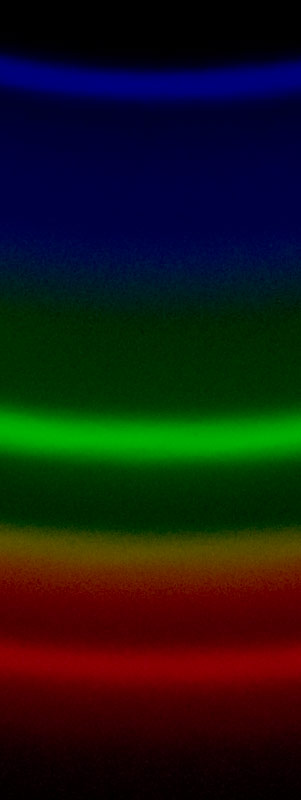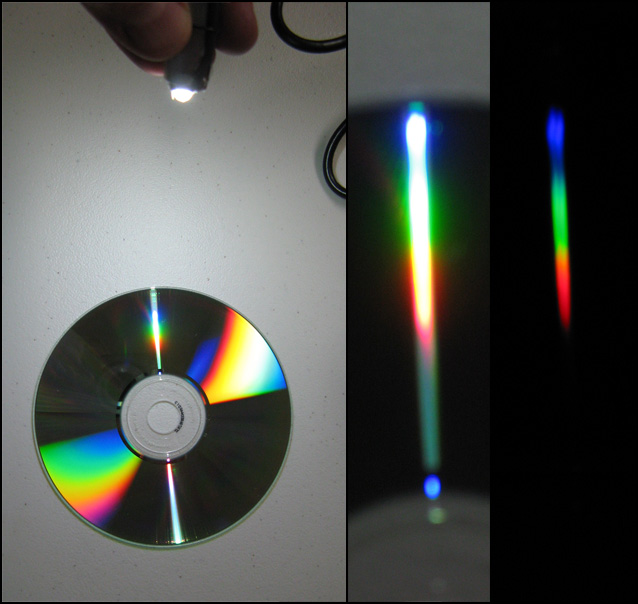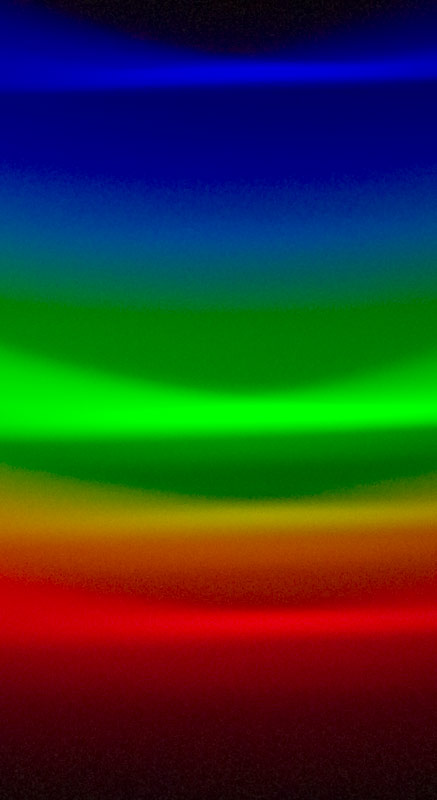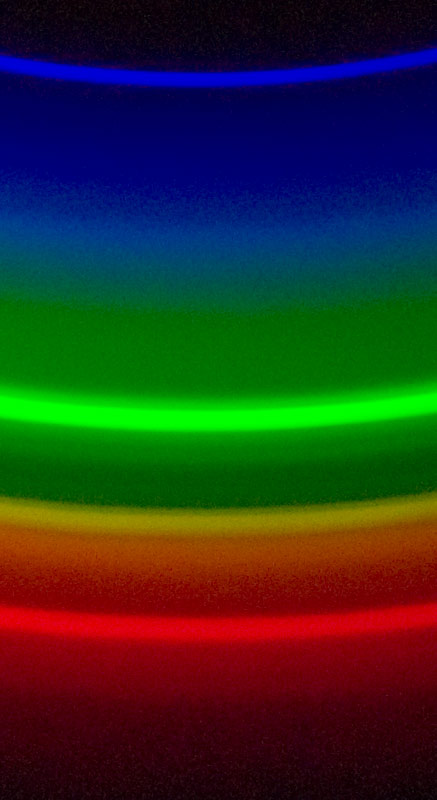Rik
I suspect that red line is actually the image of the slit rather than a spectral line. We would not expect an LED to have a any line structure other than a peak in the excitation of a white one. But even that is a band not a line. What you see from a compact fluorescent , those are lines.
Try moving your head with respect to the red line to see if parallax will shift it to another color. With many configurations of spectroscope you can see the slit. Some actually use the slit as a wavelength index. You turn a micrometer and put the line of interest on the slit and then read the wavelength. (Beck hand specs)
The link you included to the guy with LED spectra is great. I used to look at his stuff a very long time ago before he got his Ocean Optics Spectrometer
edit: I stand corrected . The LED guy's website DOES show some whites with a little sharp peak in the RED. Must be Warm Whites.
His spectra demonstrate a couple of interesting things.
First of all in the many white LEDs he measures the blue peak which is the
the excitation light for the white phosphor drifts all over the place with respect to wavelength. Anywhere from around 420 nanometers to 480 which is what you get with a Silicon Carbide blue LED as exciter.
Second the peak can be also of varying breadth (Called FWHM =Full Width Half Max if memory serves) depending on the manufacture of the LED and its operating conditions. The location and breadth of the peak affects the shape of the trough before the phosphor kicks in.
Third , every one of the different white LEDs had a distinctive and unique spectrum. The peak and the width of the phosphor spectrum demonstrates variation as well though not quite as much as the excitation.
This really means they are not something you would want to use for photography. Unless you were going to standardize on them and only use one set that you got zeroed in , if zeroing in is even possible. They DO have a long life.
In contrast to this your friendly quartz halogen bulbs of the same type and the run at a constant voltage yields black body curves that are repeatable enough for convenient use for photography. (probably plus or minus about 20 degrees K). That is also why they are used for absorbtion spectroscopy sources in the visible range. (Selected and with regulated supplies) A regulated DC supply for your qh photo lamps might not be a bad thing. Maybe a decent volt and/or ammeter too.
The only other suitable source for spectroscopy in the visible range is the Xenon short arc lamp or flash lamp. OK Carbon Arcs too.














